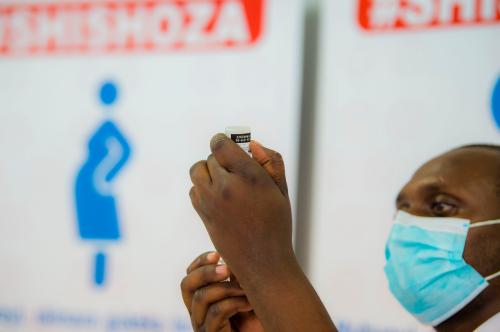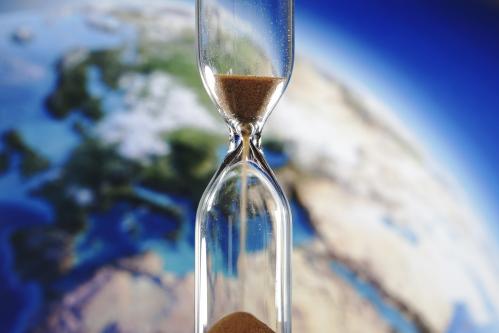New South African tech transfer hub to replicate Moderna vaccine
A tech transfer hub in South Africa established in June aims to replicate, with the aid of Moderna, the Moderna COVID-19 vaccine, according to a senior official with the World Health Organization. Moderna said in October 2020 that it would not enforce patents on its vaccine during the pandemic, but talks between the tech transfer hub and Moderna about disclosing the formula and the manufacturing process have yet to make significant progress. Regardless of whether the hub can rely on Moderna for assistance, the hub must still undertake requisite clinical trials, meaning it would not be able to distribute vaccines until the second half of 2022.
This new effort will supplement South Africa’s current production of mRNA vaccines. In July, Pfizer-BioNTech reached an agreement with South African pharmaceutical company Biovac to produce 100 million doses a year. However, the deal does not impart knowledge of the formula behind the vaccine, as the agreement is only to “fill and finish,” meaning Biovac will put the solution into vials and package them for shipping.
Expanded vaccine production is an urgent issue around the world, and Africa is no exception: According to the Africa CDC, only 3.3 percent of the continent is currently vaccinated against COVID-19 due to challenges in access, cost, and logistics, among other difficulties.
For more on Africa’s efforts to spur vaccine production and access, read, “Africa must produce its own vaccines.” Also consider listening to the Honorable Dr. Michel Sidibé, African special envoy for the African Medicines Agency of the African Union and Dr. Agnes Binagwaho, vice-chancellor of the University of Global Health Equity, share their thoughts on addressing vaccine inequity at the recent AGI event, “Accelerating COVID-19 vaccinations in Africa.”
South Africa seeks international investment to shift away from coal; DRC attempts to renegotiate a 2008 minerals-for-infrastructure contract with China
On Thursday, September 16, South Africa’s Ministry of Environment, Forestry and Fisheries announced it will seek international cooperation around facilitating and financing the country’s energy transition away from coal, which generates over 80 percent of its electricity. As a first step, the British envoy to COP26, John Murton, announced an upcoming visit South Africa prior to the COP26 conference in Glasgow. The planned meeting follows a proposal from the state power company, and Africa’s largest source of emissions, Eskom, to raise $10 billion to replace most of their coal-fired power plants with renewable energy infrastructure by 2050. However, some South African government officials fear the transition away from coal, which supports more than 90,000 jobs in the country, will cause substantial economic disruption. Proponents of the plan suggest investing in decarbonizing South Africa’s electricity infrastructure offers magnitudes more impact than similar efforts in Europe: According to energy expert Clyde Mallinson, director of Virtual Energy and Power (VEP), “For every kilowatt hour of electricity you offset in South Africa, you get four or five times as much carbon reduction as you do in Europe.”
In related news, on September 11, Democratic Republic of the Congo (DRC) President Felix Tshisekedi proposed that the country review its $9 billion minerals-for-infrastructure mining contract, which it signed with China in 2008. In the announcement, Tshisekedi panned the contract, which was signed by former President Joseph Kabila, calling such agreements “exploitation contracts… [that keep the rich] getting richer while our people remain poor.”
Sudan and Kenya suffer from floods and droughts
According to a statement made Wednesday by the Kenyan National Drought Management Authority (NDMA), 2.1 million people in 23 counties across Kenya’s north and coast will be in urgent need of food aid in over the next six months as droughts continue to threaten livelihoods. Furthermore, on September 8, President Kenyatta officially declared the droughts a national disaster. In July, the Kenyan government, along with the Food and Agriculture Organization of the U.N. (FAO), established a drought response plan, which states that a total of 9.4 billion Kenyan shillings will be needed to support food and safety nets as well as non-food interventions to the drought.
As Kenya struggles to deal with droughts, Sudan is currently experiencing flash floods that have reportedly affected over 88,000 people in 13 of its 18 states since July. According to a report by the U.N. Office for the Coordination of Humanitarian Affairs (OCHA), more than 12,700 homes have been damaged and 4,800 homes destroyed. The latest flooding comes a year after the flooding in East Africa affected nearly six million people, including 1.5 million displaced. Sudan, according to the BBC, was one of the worst affected countries with 860,000 people having their homes damaged or destroyed.
As the region grapples with natural disasters, the World Bank released the 2021 Groundswell report The report projects that by 2050 sub-Saharan Africa could see as many as 86 million internal climate migrants due to climate-related losses in livelihoods and livability.





Commentary
Africa in the news: Vaccine, energy, and climate change updates
September 18, 2021